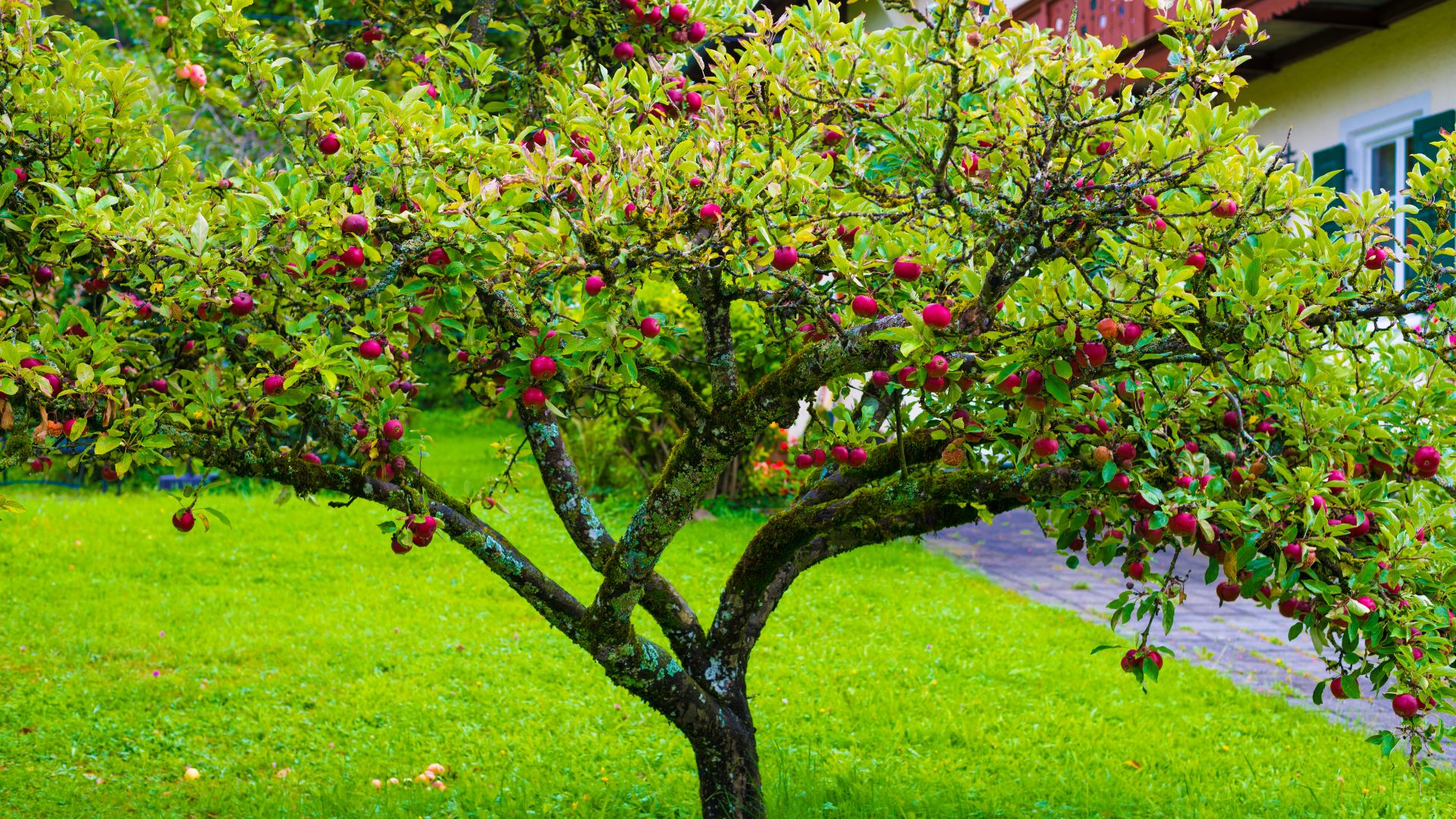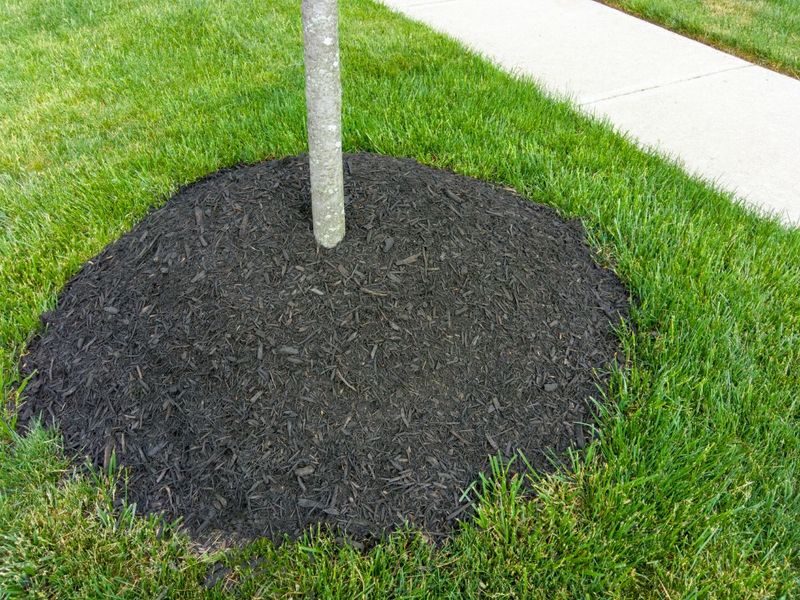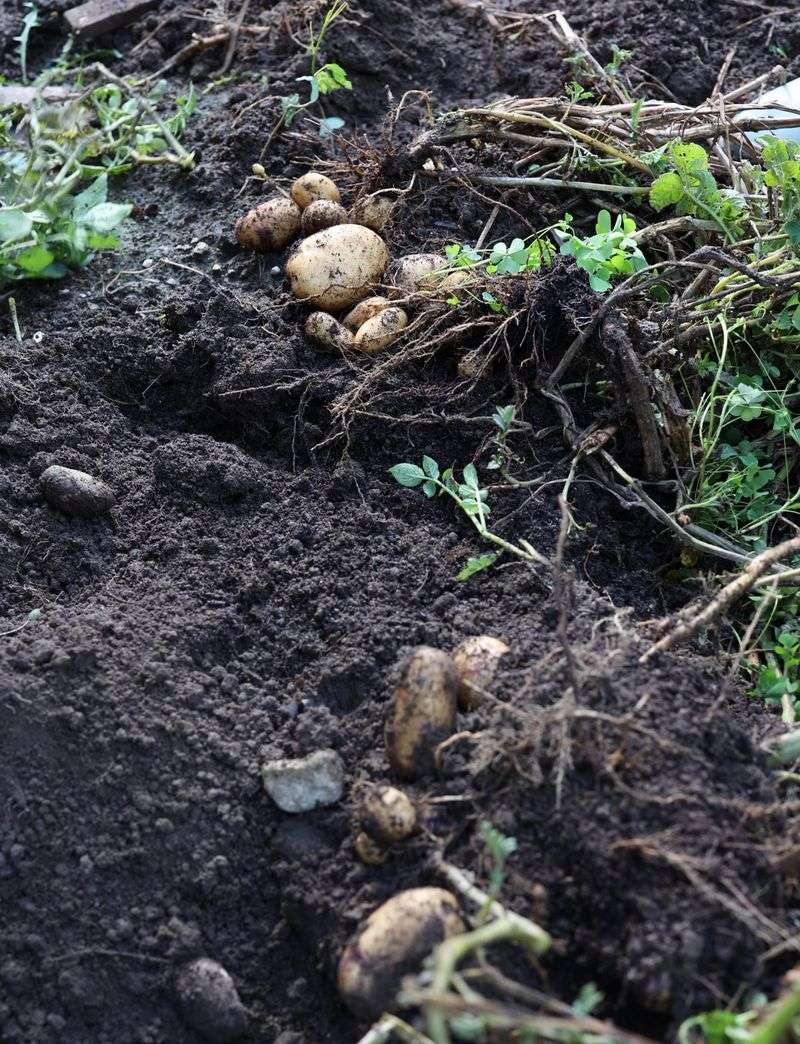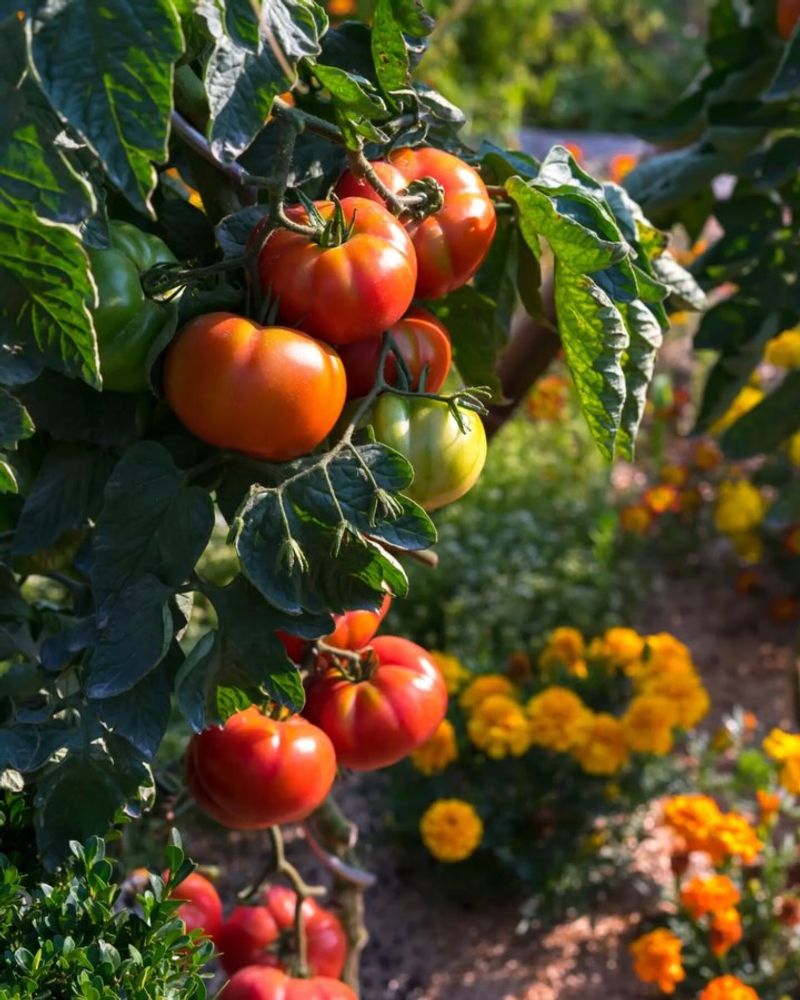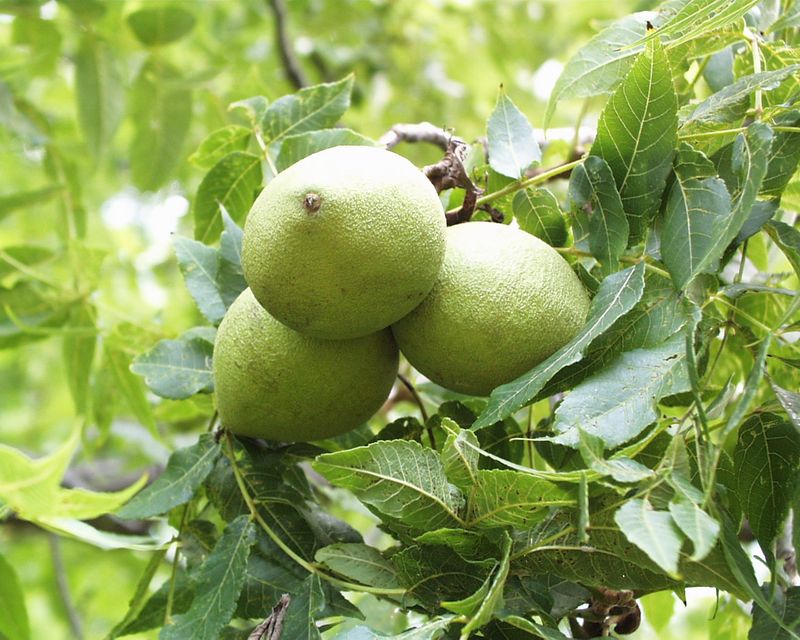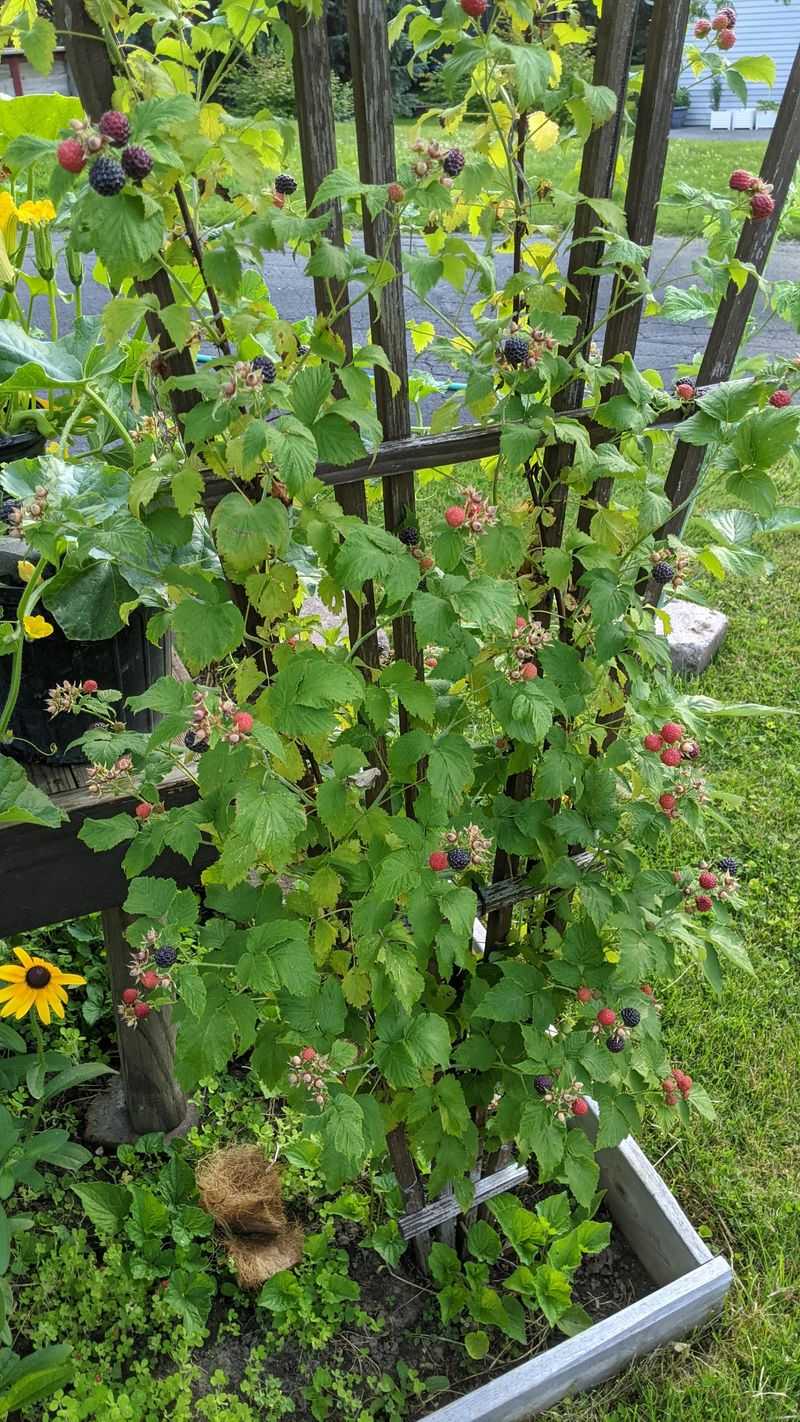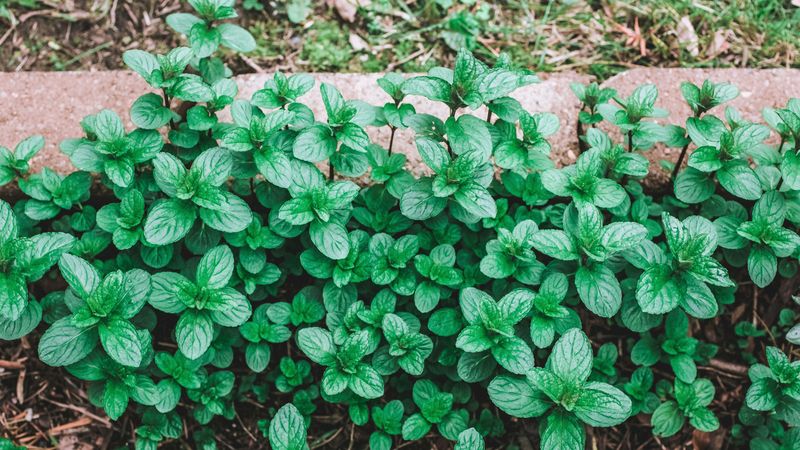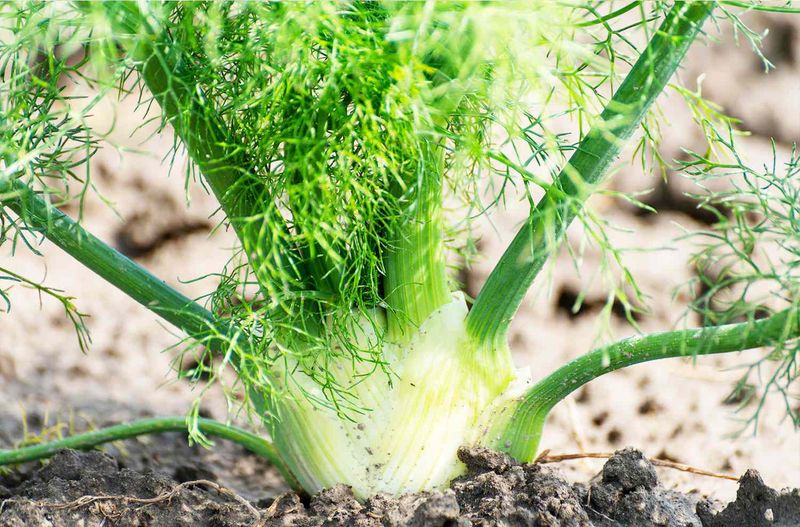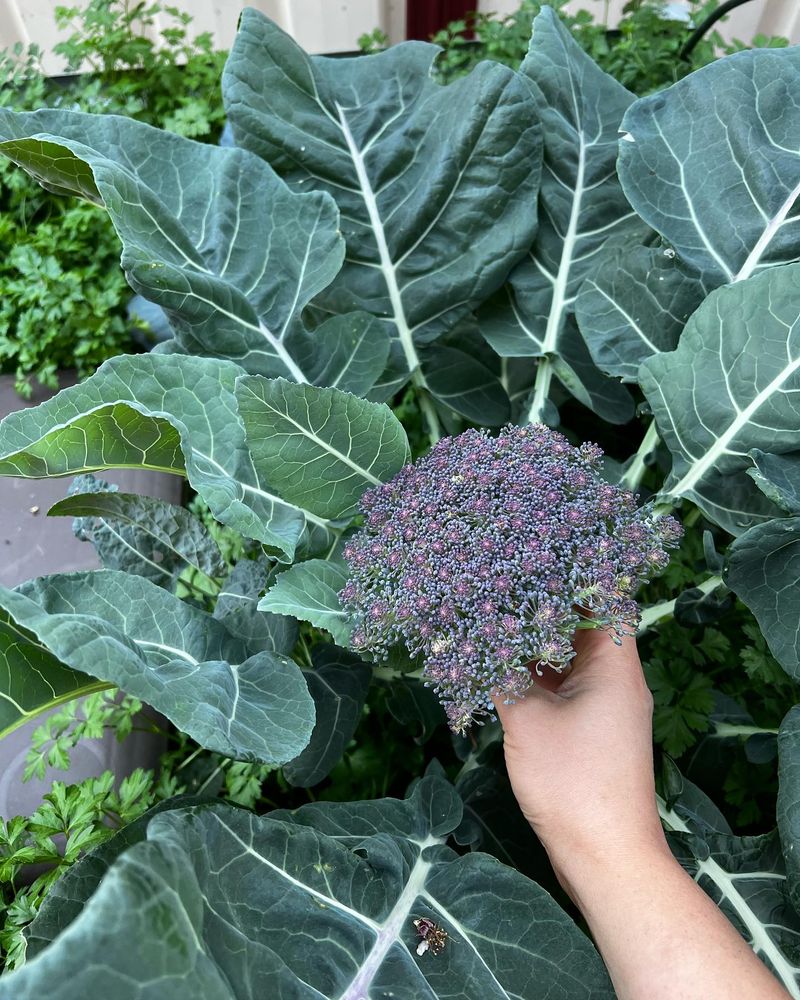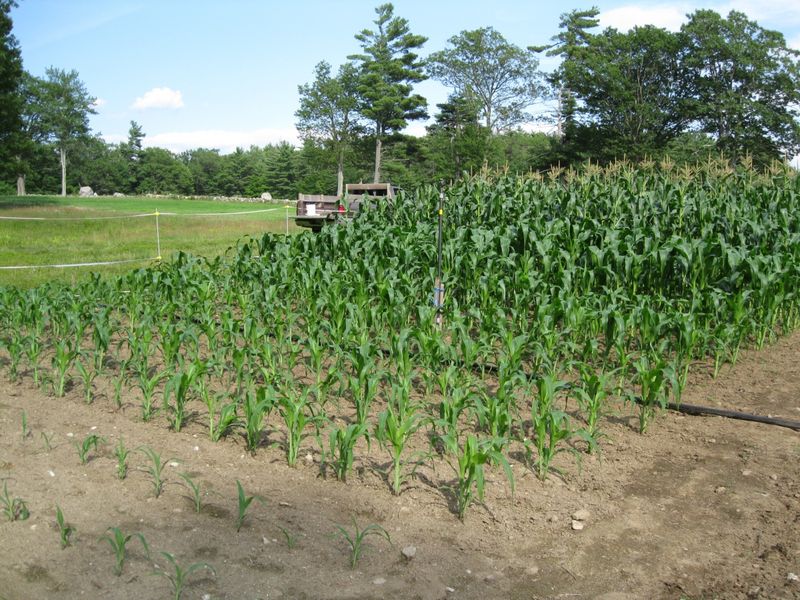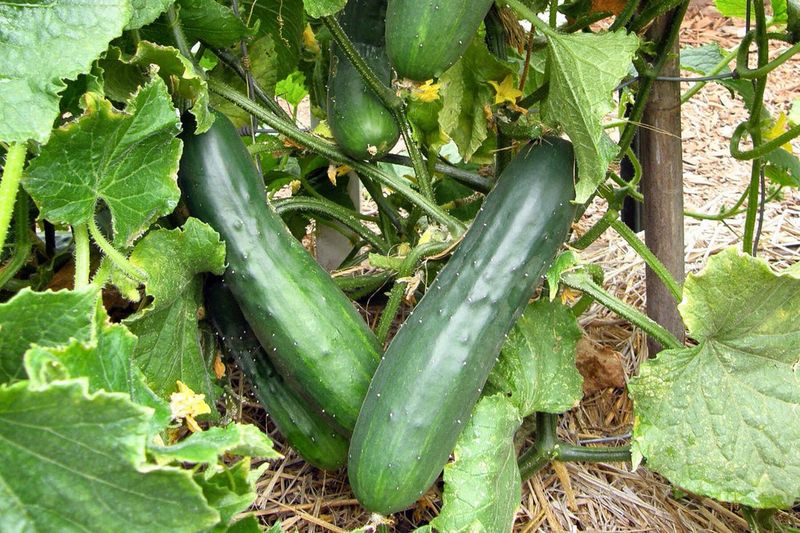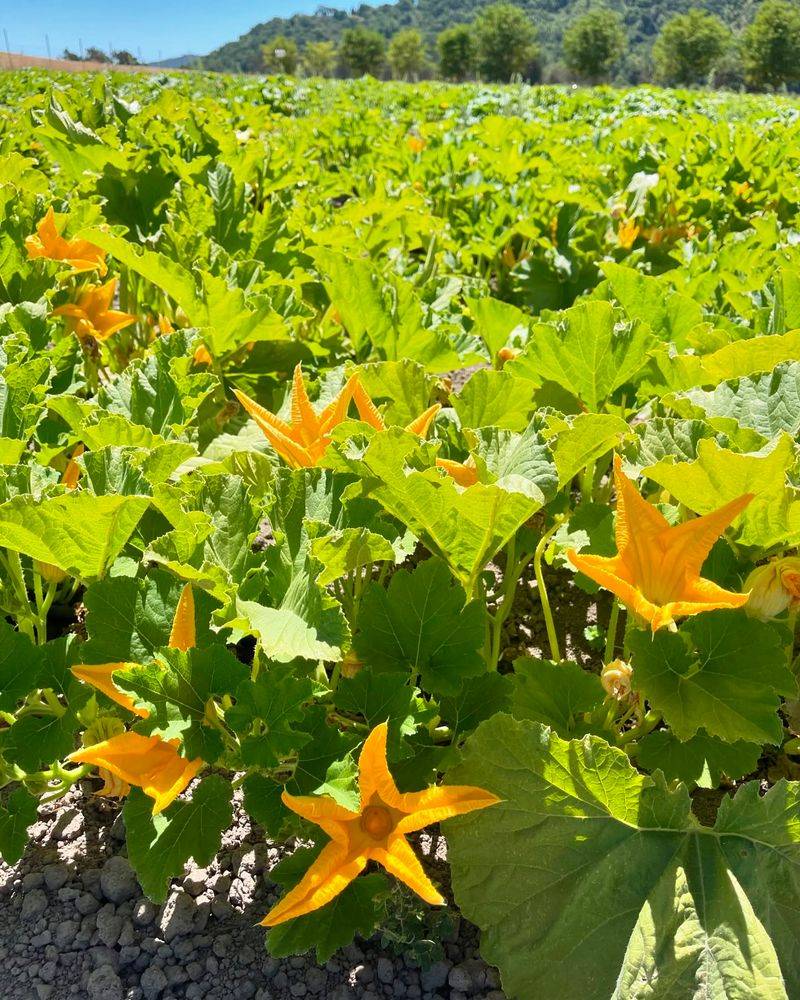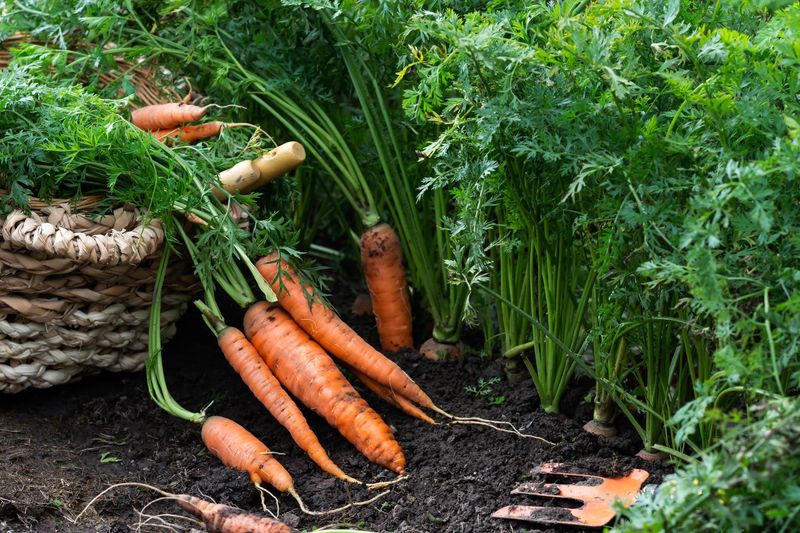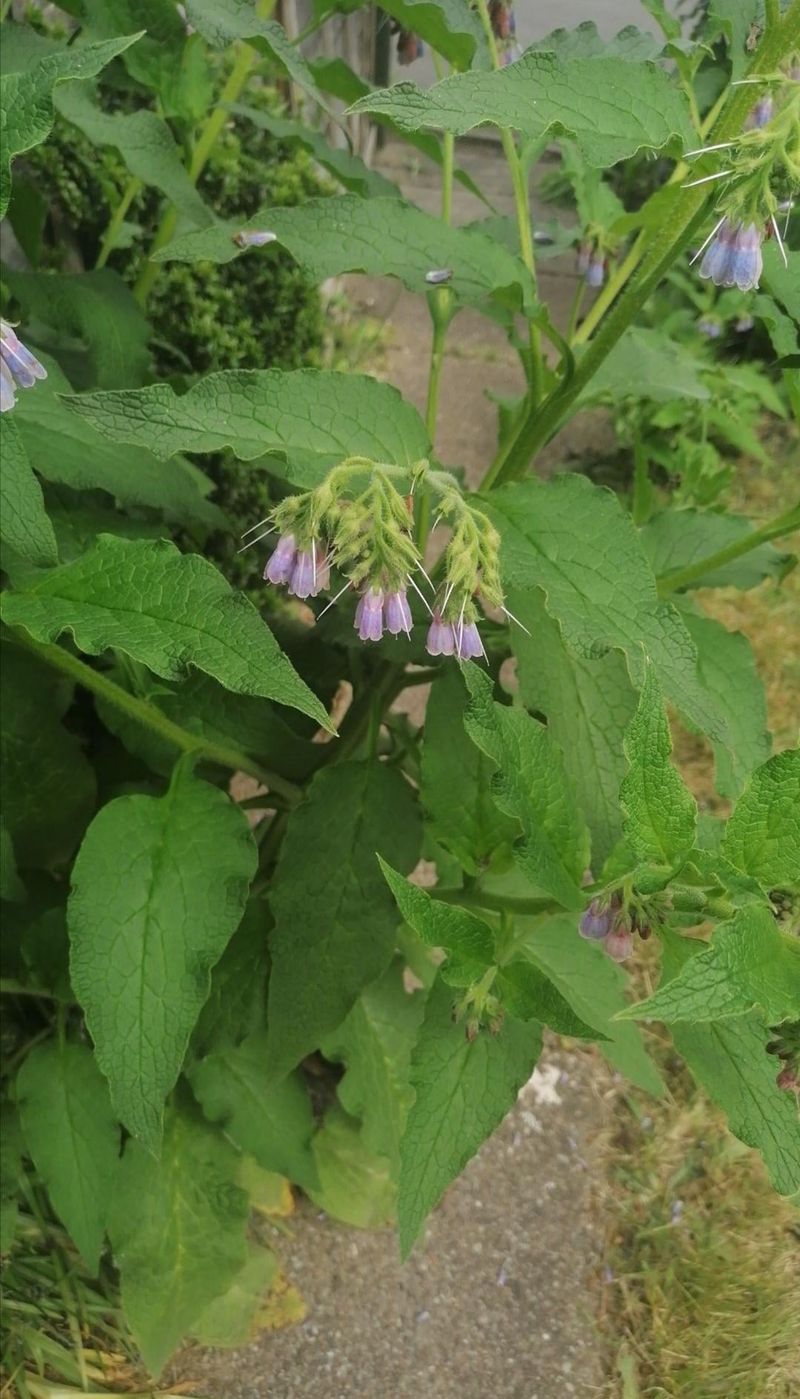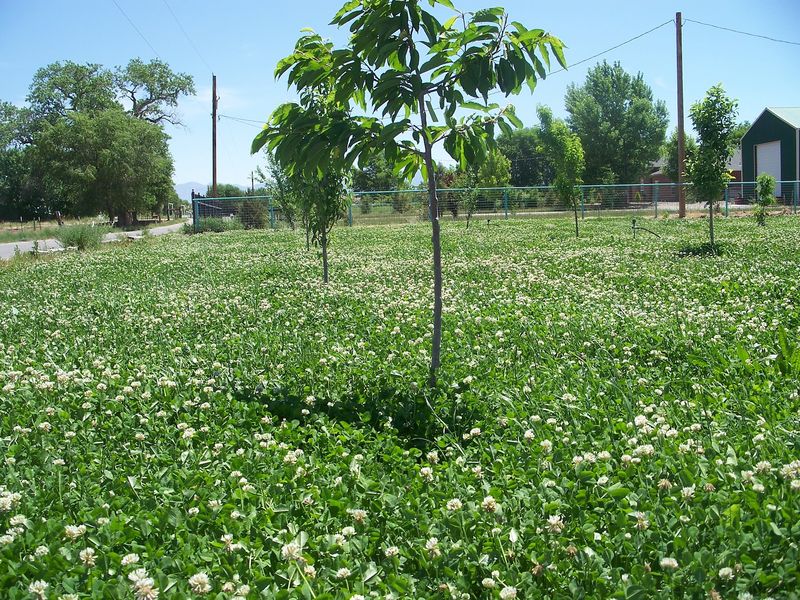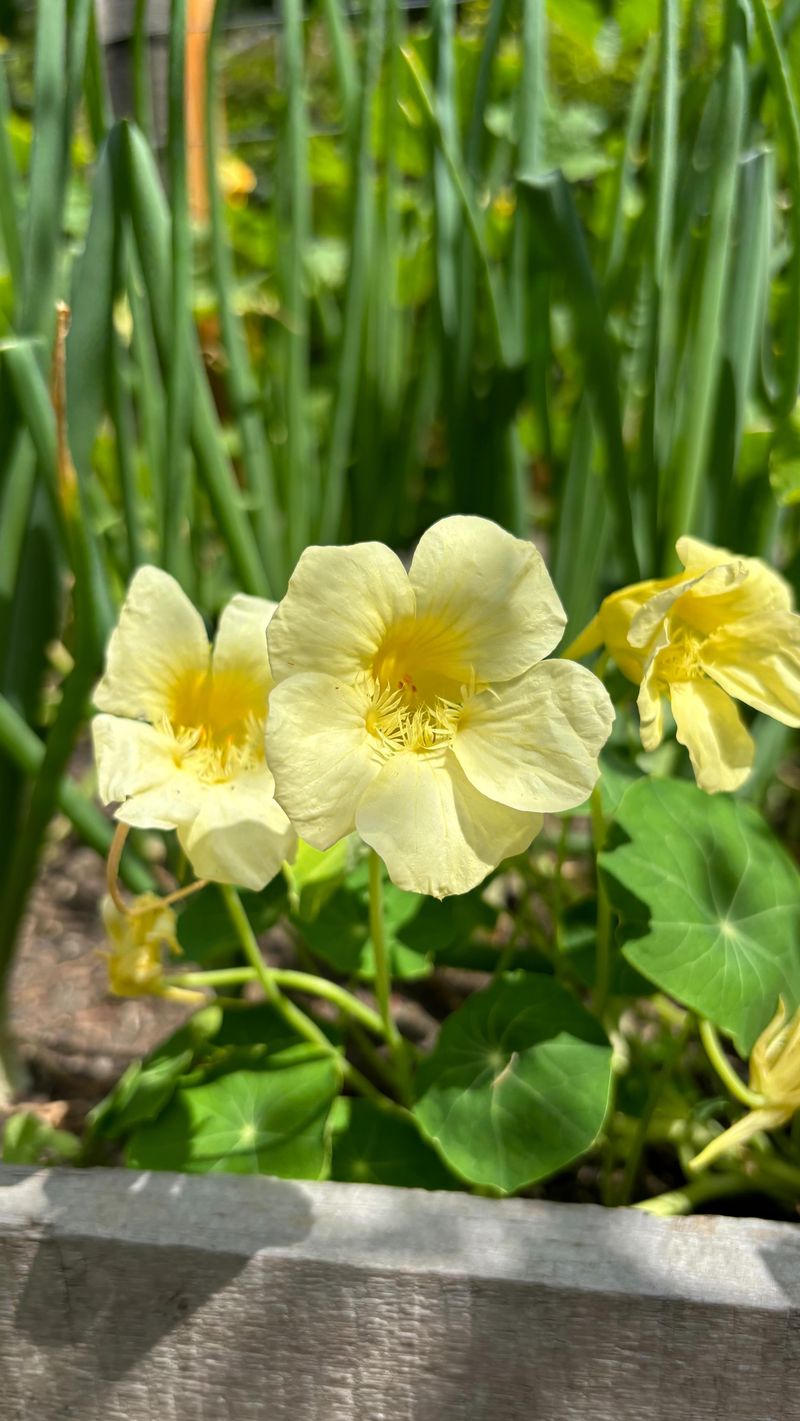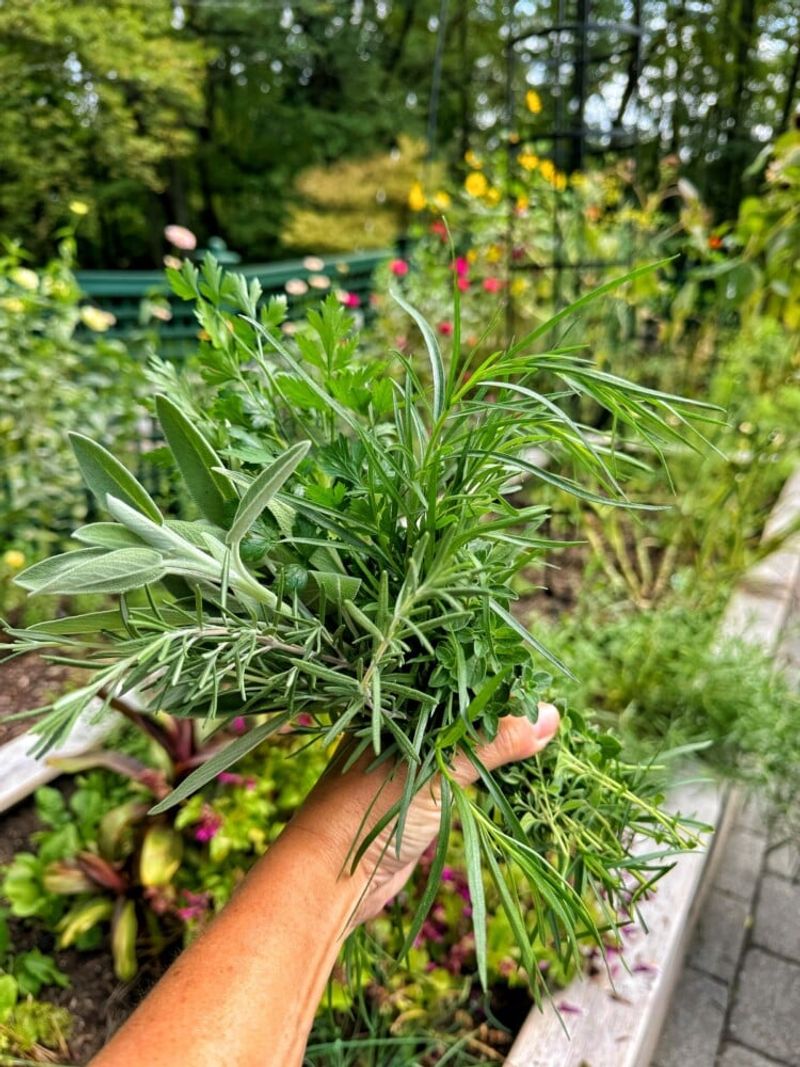Growing a fruit orchard has been one of the most rewarding parts of my garden, but I quickly learned it’s not as simple as planting trees and walking away. What you grow around your fruit trees can really impact how well they do—and I’ve seen firsthand how the wrong neighbors can lead to problems.
Some plants compete too much for nutrients or bring in pests that stress the trees out. But others? They actually help—by boosting the soil, keeping bugs away, or just creating a more balanced growing environment.
Once I started paying attention to these plant relationships, everything started working together instead of against each other. It made a huge difference in both the health of my trees and the size of the harvest.
1. Grass Creates Underground Competition
Regular lawn grass might seem harmless, but it’s one of the worst neighbors for young fruit trees. Grass roots form dense mats that compete fiercely for water and nutrients, often winning against developing tree roots.
I’ve seen newly planted apple trees struggle for years when surrounded by grass, their growth stunted compared to those with mulched areas around them. The difference can be dramatic – sometimes half the growth rate.
Keep a grass-free zone of at least 3 feet around each fruit tree. A layer of mulch not only prevents grass encroachment but also improves soil moisture retention and gradually adds nutrients as it breaks down.
2. Potatoes Can Spread Disease
Potatoes might seem like innocent garden vegetables, but they can harbor diseases that jump to fruit trees, particularly those in the Rosaceae family like apples, pears, and cherries. Both can be affected by similar fungal and bacterial issues.
My neighbor’s apple trees developed unusual leaf spots after he planted potatoes nearby. The culprit was likely a shared pathogen that flourished in both crops. These shared diseases can weaken trees over multiple seasons.
If you must grow potatoes, keep them at least 20 feet away from your orchard area. This distance helps reduce the likelihood of disease spread through soil, water splash, or insect vectors.
3. Tomatoes Share Troublesome Pathogens
Tomatoes, like potatoes, belong to the nightshade family and can transmit several diseases to fruit trees. Verticillium wilt and other soil-borne pathogens affect both tomatoes and fruit trees, creating a dangerous disease bridge.
I once interplanted tomatoes among young peach trees, thinking I was maximizing garden space. By mid-summer, both showed similar wilting patterns and reduced vigor. The trees took two seasons to fully recover after I removed the tomatoes.
Consider growing tomatoes in containers if space is limited in your garden. This isolation strategy prevents root contact and minimizes the risk of disease transmission while still allowing you to grow both crops.
4. Walnut Trees Release Growth Inhibitors
Black walnut trees produce a chemical called juglone that’s toxic to many plants, including apple trees and other fruit bearers. This natural defense mechanism helps walnut trees eliminate competition for resources in their vicinity.
A friend’s productive apple orchard began mysteriously declining years after a neighbor planted black walnuts along the property line. Branches nearest the walnuts died first, creating a pattern that pointed directly to juglone toxicity.
The toxicity zone extends roughly to the drip line of mature walnut trees, which can be 50-60 feet in radius. Even after removing a walnut tree, the soil remains toxic for several years, so plan your orchard location carefully if walnuts grow nearby.
5. Raspberries Bring Unwanted Diseases
These might seem like natural orchard companions, but they can transmit devastating diseases to fruit trees, particularly stone fruits like peaches and plums. They share vulnerabilities to many of the same viral and fungal pathogens.
Last year, my previously healthy plum tree developed unusual ring spots on its leaves after I established raspberry canes nearby. A county extension agent confirmed it was likely a shared virus that spread between the plants.
Plant raspberries at least 75-100 feet away from fruit trees if possible. If your garden is smaller, consider focusing on just one or the other rather than risking both crops with close proximity planting.
6. Sunflowers Cast Competitive Shadows
Tall sunflowers create significant shade patterns that can deprive developing fruit trees of crucial sunlight. Their impressive height means even young trees can be overshadowed during critical growing periods.
The first year I planted a row of mammoth sunflowers near my dwarf apple trees, I noticed the tree branches reaching awkwardly away from the sunflowers. The trees were literally straining toward available light, creating unbalanced growth patterns that took pruning to correct.
If you love sunflowers, plant shorter varieties or position them on the north side of fruit trees where their shadows won’t block essential sunlight. This positioning allows you to enjoy their beauty without compromising your trees’ development.
7. Mint Becomes An Invasive Nightmare
Mint’s aggressive spreading habit makes it problematic around fruit trees. Its shallow but dense root system forms mats that compete with tree roots for water and nutrients while its runners can quickly colonize a large area.
My cousin planted mint near her cherry trees, thinking it would repel pests. Within two seasons, the mint had formed a solid carpet under the trees. The cherries produced noticeably fewer fruits that year, likely due to resource competition.
If you want mint in your garden, always plant it in buried containers with the rim extending above soil level to prevent runners from escaping. This containment strategy allows you to enjoy mint’s benefits without risking your orchard’s productivity.
8. Fennel Fights With Nearly Everything
This one secretes compounds that inhibit the growth of many plants, including fruit trees. This allelopathic effect can stunt young trees and reduce productivity in mature ones when fennel grows nearby.
I experimented with fennel as an insect-attracting companion plant near my pear trees. While the fennel thrived, the nearest pear tree showed yellowing leaves and produced half the fruit of trees further away. After removing the fennel, the tree recovered within a season.
Keep fennel in a dedicated herb garden area at least 15-20 feet from your fruit trees. This separation prevents chemical interference while still allowing you to enjoy fennel’s culinary uses and beautiful flowers that attract beneficial insects.
9. Brassicas Drain Crucial Nutrients
Broccoli, cabbage, and other brassicas are heavy feeders that compete intensely for nitrogen and other nutrients fruit trees need. Their substantial root systems and high nutrient demands can leave soil depleted.
When I planted Brussels sprouts between young plum trees, both crops suffered. The trees showed pale leaves indicating nitrogen deficiency, while the Brussels sprouts never formed proper heads. Neither plant got what it needed because they were competing for the same resources.
Rotate brassicas through garden beds away from your orchard area. If you must plant them near trees, add extra compost and organic fertilizer to compensate for their heavy feeding habits and prevent nutrient deficiencies in your fruit trees.
10. Tall Grains Block Essential Airflow
Corn, wheat, and other tall grains create barriers that block air circulation around fruit trees. Good airflow is crucial for preventing fungal diseases that thrive in humid, stagnant conditions around fruit tree foliage.
After planting a corn barrier near my apple trees as a windbreak, I noticed increased powdery mildew on the apples closest to the corn. The reduced air circulation created perfect conditions for fungal spores to germinate and spread.
Plant tall grains at least 20 feet away from fruit trees, and position them so they don’t block prevailing winds. This spacing ensures adequate airflow while still allowing you to grow these valuable crops in your garden rotation.
11. Cucumber Family Attracts Problem Pests
Cucumbers, squash, and melons attract cucumber beetles and other pests that can damage fruit trees. These insects often carry bacterial diseases that affect both the cucurbits and nearby fruit trees.
Last summer, my zucchini plants developed bacterial wilt from cucumber beetles. Soon after, my nearby peach tree showed unusual leaf spotting that the extension office identified as a related bacterial infection.
Create a buffer zone of at least 15 feet between cucurbits and fruit trees. Plant flowers like nasturtiums or marigolds in this space to confuse pests and potentially trap them before they reach your valuable trees. This integrated approach helps protect both plant types.
12. Pumpkins Create Rodent Hideouts
These vines create dense ground cover that provides perfect hiding places for mice, voles, and other rodents that damage fruit tree roots and trunks. The large leaves offer protection from predators while the fruits provide food.
After growing pumpkins near my apple trees one year, I discovered bark damage at the base of several trees that winter. The pumpkin patch had harbored a mouse population that turned to tree bark for food when other options disappeared.
If growing pumpkins in your orchard, keep vines at least 6-8 feet from tree trunks and clear away all plant debris after harvest. Consider placing owl boxes nearby to encourage natural predators that will help control rodent populations.
13. Deep-Rooted Veggies Compete Underground
Carrots, parsnips, and other deep-rooted vegetables compete directly with fruit tree roots for water and nutrients. Their extensive root systems explore the same soil layers where tree roots are actively growing.
I once planted a row of parsnips alongside my cherry trees, thinking their different growth habits would make them compatible. By harvest time, the parsnips nearest the trees were stunted and misshapen, while the trees showed signs of stress during dry periods.
Reserve deep-rooted vegetables for areas at least 8-10 feet away from your fruit tree drip lines. This separation gives tree roots the space they need to expand without direct competition, resulting in healthier trees and better vegetable harvests.
14. Comfrey Improves Soil Structure
Comfrey’s deep taproots mine nutrients from lower soil layers and bring them within reach of fruit tree roots. When comfrey leaves die back or are cut as mulch, they release these nutrients in a form trees can readily use.
I’ve planted comfrey around the drip line of my apple trees for years. The difference between these trees and ones without comfrey companions is remarkable – faster growth, greener leaves, and consistently better fruit production.
Cut comfrey several times during the growing season and use the leaves as mulch right around your trees. The leaves break down quickly, creating a nutrient-rich environment that feeds the soil food web and ultimately benefits your fruit trees.
15. Clover Creates Natural Nitrogen
Clover forms a living mulch that fixes atmospheric nitrogen through a symbiotic relationship with soil bacteria. This natural fertilizer factory reduces or eliminates the need for additional nitrogen fertilizers around fruit trees.
After establishing white clover between my pear trees, I noticed a dramatic improvement in leaf color from pale yellow-green to deep green. The trees’ vigor increased without adding any commercial fertilizers to the soil.
Mow clover periodically to keep it from competing with young trees for water. The clippings return additional nutrients to the soil surface while keeping the ground cover manageable. This approach creates a low-maintenance, self-fertilizing orchard system.
16. Garlic Repels Orchard Pests
This one produce sulfur compounds that naturally repel many common fruit tree pests, including aphids, fruit flies, and some moths. These compounds work as a biological deterrent without harming beneficial insects.
My peach trees used to suffer from peach tree borers until I started planting garlic bulbs around their bases. The following seasons showed dramatically reduced borer damage, and I’ve continued the practice with all my stone fruit trees.
Plant garlic cloves in fall around the drip line of fruit trees, spacing them about 6 inches apart. They’ll grow through winter and spring, providing protection during critical pest periods before being harvested in early summer.
17. Nasturtiums Attract Beneficial Insects
These serve as insect magnets, drawing pollinators to your fruit trees while also distracting aphids and other pests from your valuable crops. Their bright flowers and distinctive foliage create habitat diversity that supports orchard health.
I’ve planted nasturtiums around the outer edges of my apple tree drip lines for three seasons now. Not only do they add beautiful color, but I’ve noticed increased bee activity during bloom time and fewer aphid problems on the trees themselves.
Allow nasturtiums to trail naturally around trees, but avoid letting them climb the trunks. Their sprawling habit works best when they can form patches near but not directly against the tree base, creating separate but complementary growing zones.
18. Aromatic Herbs Confuse Tree Pests
Strongly scented herbs like rosemary, sage, and thyme create an aromatic barrier that masks the scent of fruit trees from potential pests. Their essential oils disrupt the chemical cues insects use to locate host plants.
After establishing a mixed herb border around my plum trees, I noticed a significant reduction in leaf-curl plum aphids compared to previous years. The herbs seemed to create an invisible shield that confused the pests’ navigation systems.
Plant a diverse mixture of aromatic herbs rather than just one type. This diversity provides better protection since different herbs repel different pests. As a bonus, you’ll have fresh culinary herbs available right near your fruit harvest.

